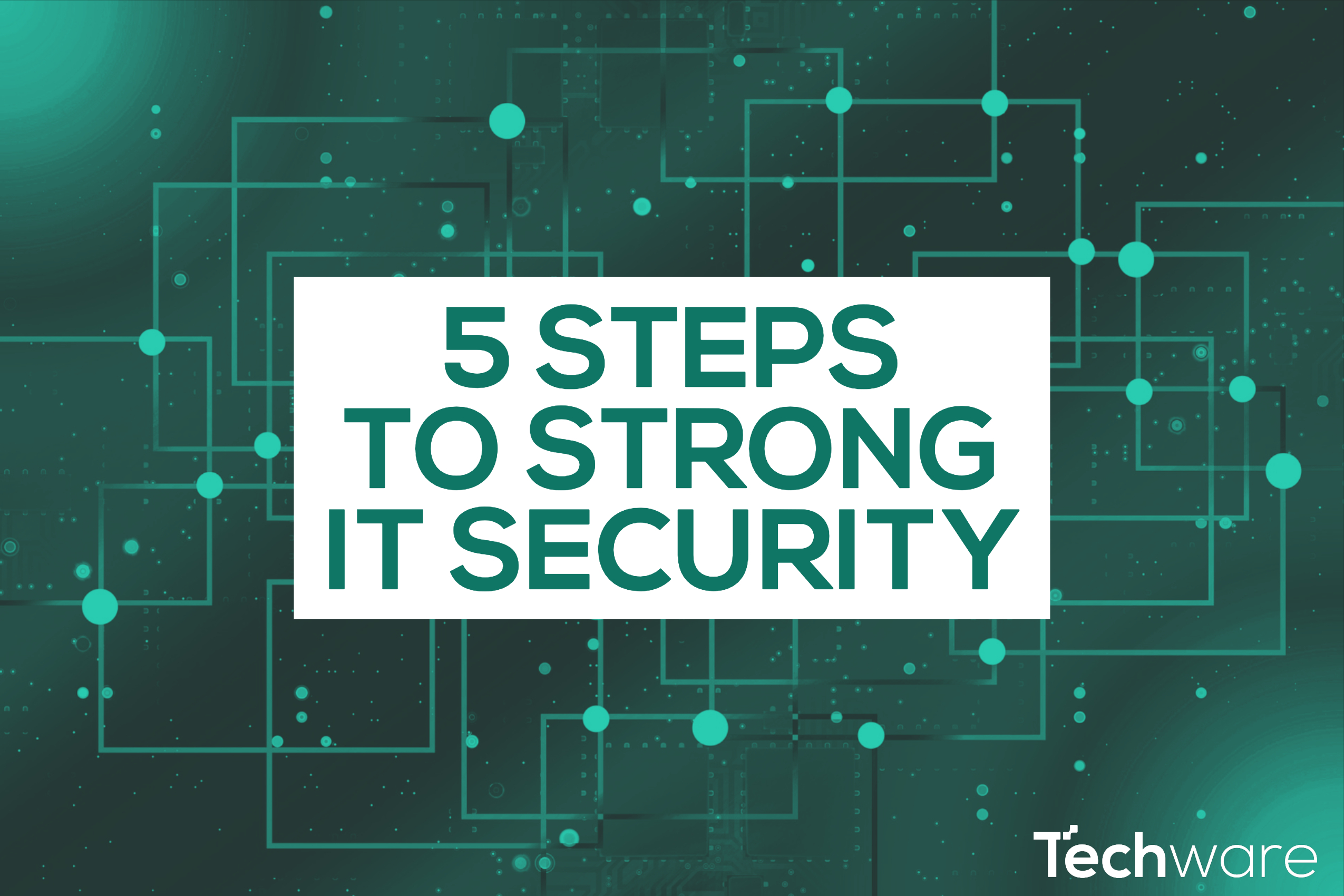
It’s a crazy world for security fears at the moment.
With an uncertain global market and hackers getting more sophisticated in their tricks and techniques, it is a potential minefield for the unwary. Every click can be fraught with danger to your business and its IT security.
If you have ever suffered the catastrophic results of an IT lapse, you know just how vital IT security is. Implementing these 5 easy steps to IT Security into your business can help reduce your risks.
Neglect it at your peril.
There are some simple steps you can take to ensure your IT services are secure. As one of Melbourne’s leading technology companies, Techware has seen how this neglect can cause suffering for many businesses.
From our experiences we have come up with 5 easy steps to IT Security that can help reduce your risks.
1. Security Policy
All good IT security begins with a reliable policy. Creating a strong security policy will set standards and guidelines for your users. By implementing this, you will dictate the configuration of your overarching rules and regulations. Leaving no room for errors or miscalculations that could result in a breach such as the DO’s and DONT’s for users, password lengths and standardise practises.
Without a security policy is like granting permission for misbehaviour which can leave your business vulnerable to unauthorised access.
2. Self-Awareness on Data
IT security needs to start with self-awareness. Ask yourself some hard questions and be honest with your budget and limitations. Security is worth spending on, so take this into consideration. What data is critical to your operations? Which data can you not afford to be without for 24 hours or more?
Knowing the data most critical to your business, allows you to take mitigating actions.
Where is the data located; on the premises, another office, on a cloud service? In the case of an emergency will you be able to access this data or will it be lost? It is important to have a system in place that ensures a speedy recovery of data and servers. Remember that this needs to match your business’ tolerance level of accessibility. Ensuring critical data is always accessible is an essential step.
3. Getting the Basics Right
It is important to get the basics right.
Theses are the non negotiables; if you ignore any advice, at least don’t ignore this.
You can then make additions to this as and when need increases. Having these systems in place reduces the risk from viruses, worms, spyware and malware. All of which can have severe effects on your IT system.
-
Malware/Virus Protection- this refers to any antivirus software currently operating on your computer. They help to protect against malicious software entering and affecting your systems.
-
Spam Protection- will protect your emails and cloud services. This is in place as a shield to stop malicious software before it reaches your Inbox.
-
Firewalls- block unwanted traffic to your business network and ensure any issues get contained and don’t spread.
-
Ensuring your software and protection systems are regularly updated is important. Malicious software is constantly evolving and improving; you need to keep up with it.
4. Disposal of Outdated Equipment
If you have equipment gathering dust and coughing up floppy disks in a corner somewhere- get rid of it. But remember to duplicate any information before you replace it, for obvious reasons.
Create a system that standardizes the offloading of information when you replace devices. This way you ensure that everyone knows the processes and important data is not lost.
5. Mobile Vulnerability
Your mobile device is one of the most vulnerable pieces of technology you own. More and more people are using mobile to access business documents, email and applications. This can lead to some serious breaches in privacy. Management and control of the sensitive data stored on mobile must be a business priority.
Don’t get complacent or allow your employees to slip up.
It’s a brave new world in terms of mobile device security. There are hackers out there salivating at the knowledge that we haven’t yet cottoned on to just how susceptible to attack our mobiles really are.
What’s the takeaway?
Security is a conversation you must have with your IT manager.
-
Having a Security policy in place makes security a priority for all employees.
-
Can you afford to lose information that is vital to the business? Being self-aware will help reduce the impact if an emergency does occur.
-
Getting the basics right is an important step to ensuring your IT Security.
-
A standard offloading system ensures you don't lose work when you upgrade equipment.
-
Minimising the amount of sensitive data on your mobile device is important.
By following these 5 steps, your sensitive and private information will become more secure. If you would like to learn more about how to invoke the best practices for IT security management why not get in contact with our helpful staff.

